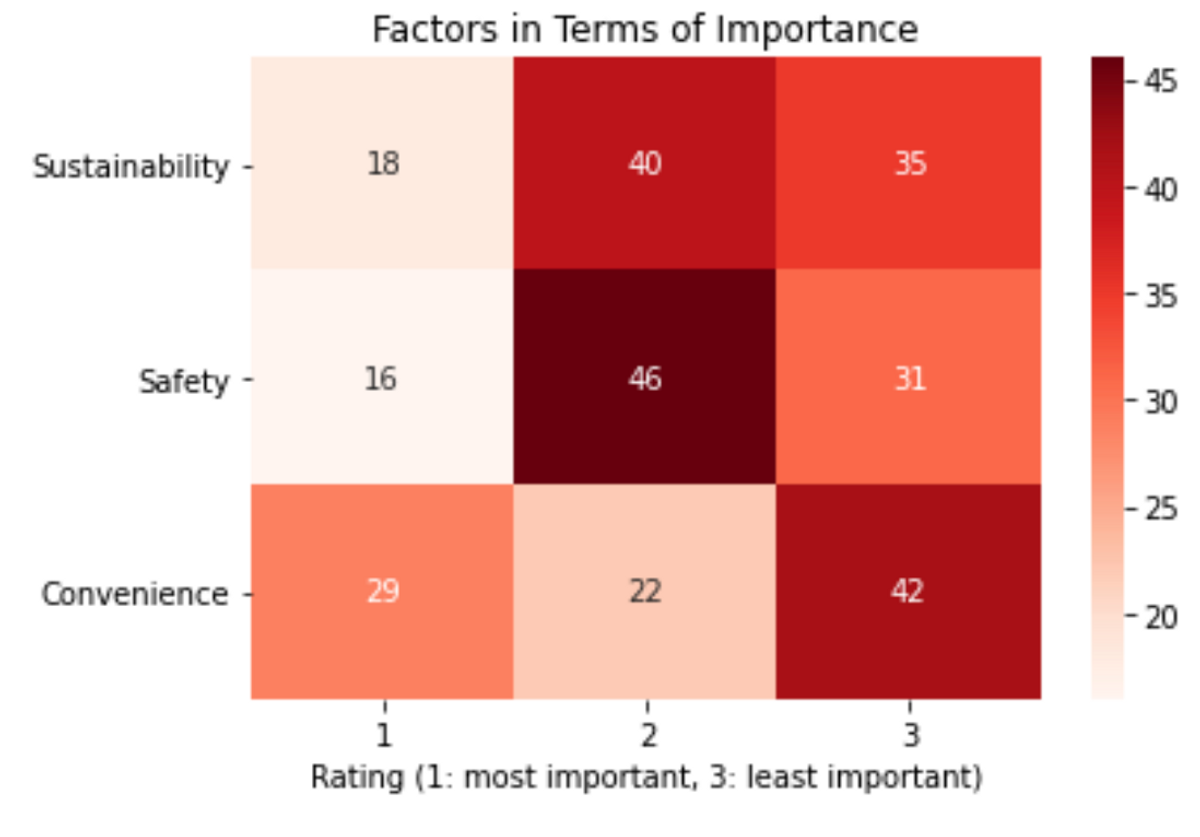
How Does Harvard’s on-Campus Dining Protocol Fare During the Pandemic? An Analysis of Two Resource Management Systems
The COVID-19 pandemic has forced HUDS to make massive changes in the way it serves students. How do students interact with this new iteration of HUDS? How can the current system be improved?
Those living on campus this year know that the Harvard University Dining Services (HUDS) dining hall protocol looks very different from that of a COVID-free semester. Students enter each hall in a socially distanced line and wait to be directed towards an assembly line of sorts where their to-go meal is assembled by HUDS staff. For every visit to the dining hall, students receive a large brown paper bag with disposable containers holding each component to their meal, including plastic cutlery and water bottles. While the disposable container system minimizes risk amidst the pandemic, it creates a large quantity of waste. Many students experience a trash buildup in their own rooms—with large bags containing past meals’ trash lined up next to their desk or door.
Surely a disposable container system is not the only solution to keep Harvard students, faculty, and staff healthy. HUDS is aware of this and has been exploring the possibility of using a reusable container system in lieu of the current disposable one. Such a program would potentially incorporate a “check-in-check-out” system where students would pick up a cleaned reusable container each time they enter the dining hall, dropping off used containers from previous meals. Miscellaneous items, such as the paper tote bag and plastic cutlery, could be replaced by reusable products as well. This system would require HUDS staff to wash and sanitize all reusable items as well as students to return their used containers in subsequent visits.
Data and Methods
To gather data about students’ dining habits and resource usage under the current disposable container system, we reached out to Crista Martin, the Director for Strategic Initiatives and Communication at HUDS, who provided us with HUDS internal data and introduced us to HUDS’ intent to implement a reusable container system for on-campus students. The HUDS internal data consisted of student swipe counts for each meal across each dining hall (Annenberg and the twelve upperclassmen houses) across an 11-day period in mid-September. We additionally sent out a survey to on-campus students in the HODP Survey Group. The survey, which had 132 respondents, asked students how many containers they took on average per visit to the dining hall and their perspective on the sustainability, safety, and convenience of the current dining system versus the proposed reusable container system.
When do students go to the dining halls?
To start off, we extracted insights from HUDS swipe data alone, which told us how many students visited each dining hall per meal between September 13 and September 23, 2020 (an 11-day period).
 Figure 1: A segmented bar chart showing total swipe count for each meal over the days of the week.
Figure 1: A segmented bar chart showing total swipe count for each meal over the days of the week.Fig. 1 plots the daily total swipe counts of each meal (across all dining halls) over seven of the 11 days. Assuming that the data from this seven-day period is representative of student dining habits, it is clear that substantially fewer students visited the dining halls for breakfast than for lunch and dinner. It also seems like fewer students than usual visited the dining halls on Fridays, Saturdays, and Sundays, which makes sense considering that students tend to enjoy off-campus social activities with their friends on weekends (even during the pandemic!) and are thus less inclined to visit the dining halls.
How much total food do students eat?
The swipe data alone, however, is insufficient for our analysis, especially as we consider the practical and environmental implications of HUDS’ existing disposable container system. To obtain a rough estimate of how many containers in total are going into students’ hands as they walk away from dining halls, we combined the swipe data with data from the student survey question asking each student how many containers they usually take each visit to the dining hall. On average, each student visiting the dining hall takes 1.08 main entree containers at lunch, 1.14 entree containers at dinner, and 1.37 additional containers (e.g. salads and soups) during either meal.
 Figure 2: A grouped bar chart showing students’ total container usage for each meal and within each dining hall over a seven-day period.
Figure 2: A grouped bar chart showing students’ total container usage for each meal and within each dining hall over a seven-day period.Fig. 2 plots the total container consumption counts across meals and dining halls after we multiplied the aforementioned averages by daily swipe counts. Now that we can calculate the total number of disposable containers students are using en masse, we can compare the costs of HUDS’ disposable container system with those of a potential reusable container system. Based on these total disposable container counts and an investigation of costs of both types of containers, we concluded that the reusable container program would pay for itself. In fact, based on an economic analysis conducted by HUDS representatives, it takes under 30 uses of each type of reusable container for the program to pay for itself.
How do students feel about a possible reusable container system?
A reusable container campaign is only as effective and impactful as how well-received it is by the students who are directly under the program. To that end, we investigated what the student perspectives (as gathered from our survey) can tell us. We first obtained a sense of broad student values regarding dining during these unprecedented times by having students rank (from 1 to 3, with no repeat rankings) the factors of sustainability, safety, and convenience in order of importance when it comes to dining protocol.
 Figure 3: A heatmap showing the relative extent to which students value sustainability, safety, and convenience when it comes to campus dining in the age of Covid-19. The color bar denotes the frequency of a particular degree of agreement with a statement. Data from 93 student respondents.
Figure 3: A heatmap showing the relative extent to which students value sustainability, safety, and convenience when it comes to campus dining in the age of Covid-19. The color bar denotes the frequency of a particular degree of agreement with a statement. Data from 93 student respondents.Fig. 3 illustrates the relative extent to which students value the three factors when it comes to campus dining during the pandemic. The numbers in each box correspond to the frequency of respondents who chose a particular rating for the specified value. In general, sustainability and safety is moderately strongly valued by students, since most students ranked it second in importance, and few students ranked it as most important. Convenience, on the other hand, tends to be of either greatest importance or least importance to students. The data here suggest that it may be challenging to get those students who value convenience above safety and sustainability on board with the reusable container system, which is, at first glance, less convenient than the existing disposable container system — as mentioned above, the new system would entail that students be responsible for “checking out” and returning their containers to dining halls.
 Figure 4: A heatmap showing the extent of student agreement to three statements regarding the proposed reusable container system. The color bar denotes the frequency of a particular degree of agreement with a statement. Data from 101 student respondents.
Figure 4: A heatmap showing the extent of student agreement to three statements regarding the proposed reusable container system. The color bar denotes the frequency of a particular degree of agreement with a statement. Data from 101 student respondents.
The above heatmap provides a visualization for student perspectives on the proposed new system. In the last section of the student survey, we asked students to indicate their extent of agreement with the following four statements: (1) “I would be willing to switch to the reusable container system outlined above,” (2) “switching to reusable containers would be environmentally beneficial,” (3) “a reusable container program would be difficult for students to maintain and comply with,” and (4) “I would feel safe about eating from reusable containers that are washed and disinfected by HUDS.” Since the second statement regarding environmental friendliness received widespread agreement (and appropriately so), we excluded it from the above heatmap and bar chart so as to not skew the color scales. We then denoted responses to the remaining three statements with the labels “Willing to Switch,” “Difficult,” and “Safe,” respectively, on the charts. As can be seen, there is general agreement with all three statements.
One of HUDS officials’ challenges would then be to persuade students that the benefits of the new system outweigh the forecasted administrative and logistical costs on the students’ end.
Challenges
After compiling all our data and creating the visualizations, we met with HUDS officials in order to discuss potential challenges and a way forward. As shown above, one of the challenges would be to convince students to stick to our proposed reusable container system. This would mean students returning the containers to the dining hall for cleaning on a daily basis instead of leaving the containers in their rooms or throwing them away (which would be quite costly for HUDS). HUDS officials suggested making the reusable container system an “opt-in” system. In this way, students who opt-in to the new system would be more likely to commit to its rules and frequently return the containers to the dining hall. We also suggested creating a check-out procedure similar to that of a library, where students must have returned their old containers in order to obtain new ones. As a result, students would be more likely to remember to return their old containers to the dining hall each time they go to pick up a new meal. However, even without the implementation of these incentives systems, we are optimistic that the Harvard community will abide by the policies of this new container system, if instated.
The most prevalent challenge to this proposal, however, is the extent to which it meets pandemic safety standards. The current HUDS protocol is optimized to minimize contact points between staff and students. With the new system, there would be at least one additional contact point at the start of the line, where a staff member would pick up students’ used containers. Additionally, students would need to be careful that their reusable bag does not touch anything when they go through the line as it may potentially be contaminated. Another COVID safety concern associated with this new system is the need for dishwashers. Under this plan, HUDS would need to ensure that the staff in charge of washing the reusable containers are socially distanced in the kitchen and must find a way to ensure that the dishwashing staff are protected from any potentially contaminated containers coming from the students.
Conclusion
For our project, we analyzed swipe data provided to us by HUDS and survey data from a survey we created. We determined from this analysis that most students who were on-campus picked up their meals from Annenberg and that while most students believe that switching to a reusable container system will be beneficial for the environment, a smaller number are confident in the student body’s ability to maintain this system.
Although this system would require additional safety precautions to prevent the spread of COVID, we hope that our analysis helped give insight into what a reusable container system would look like on campus and that this system will be adopted in the near future.
Acknowledgements: Crista Martin, Alison Hu, Thuan Tran, Henry Austin, Harvard College Open Data Project
